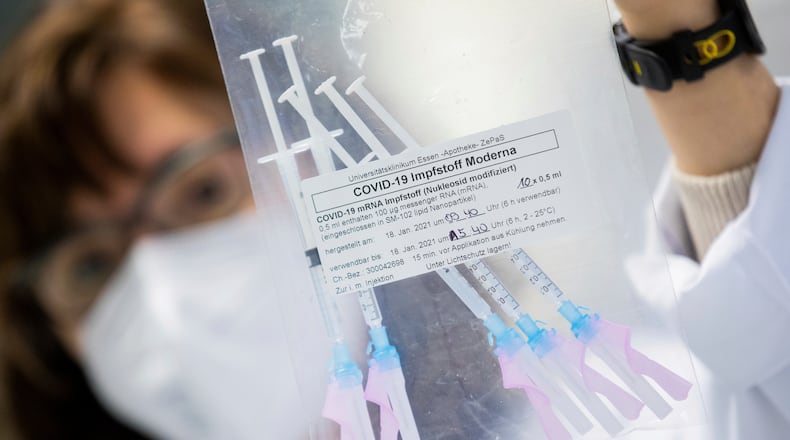The conditions include the following:
- Sickle cell anemia
- Down syndrome
- Cystic fibrosis
- Muscular dystrophy
- Cerebral palsy
- Spina bifida
- People born with severe heart defects requiring regular specialized medical care
- People with severe type 1 diabetes who have been hospitalized for this in the past year
- Phenylketonuria (PKU), Tay-Sachs and other rare, inherited metabolic disorders
- Epilepsy with continuing seizures; hydrocephaly; microcephaly; and other severe neurological disorders
- Turner syndrome, fragile X syndrome, Prader-Willi syndrome and other severe genetic disorders
- People with severe asthma who has been hospitalized for this in the past year
- Alpha and beta thalassemia
- Solid organ transplant candidates and recipients
The list was developed in consultation with medical experts across the state, Gov. Mike DeWine said.
Ohioans with those conditions will eligible to receive the vaccine even if they are not 65 years old or older. However, Ohio Department of Health Chief Medical Officer noted that the Pfizer vaccine has only been approved for people 16 and older and the Moderna vaccine is only for people 18 and older.
“Individuals with these conditions face significantly higher risk for adverse COVID-19 outcomes,” DeWine said.
About 200,000 people will be eligible under this group.
People with those conditions will be able to get the vaccine from any approved vaccine provider in Ohio.
The state is encouraging doctors and hospitals who regularly treat these patients to reach out to them about getting the vaccine. Providers are being asked to display an explanation of the medical conditions on their website to help inform patients if they are eligible.
If a patient choses to get vaccinated at a pharmacy or local health department, the state is not requiring additional documentation, Ohio Department of Health Chief Medical Officer Bruce Vanderhoff said. However, providers will affirm eligibility at registration and/or confirm that verbally when the patient is vaccinated, he added.
“The state will be monitoring this population’s vaccination rate,” Vanderhoff said. “We’re doing that to ensure that there is uptake and that there is not abuse of the category.”
Ohio will monitor it through its disease reporting system.
Currently, Ohio is in Phase 1B of its vaccination distribution plan. Ohioans ages 65 and older, K-12 schools staff and those with a severe congenital, developmental or early onset medical disorder and an intellectual or developmental disability are able to receive the vaccine.
About the Author
